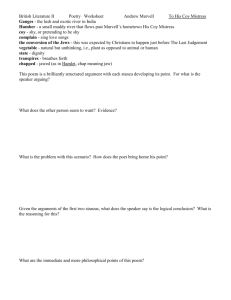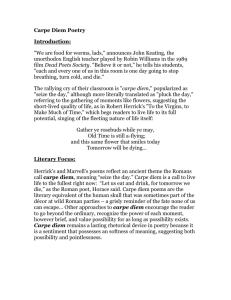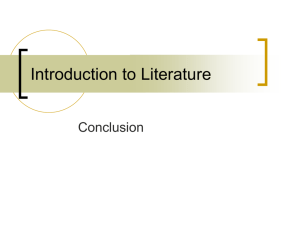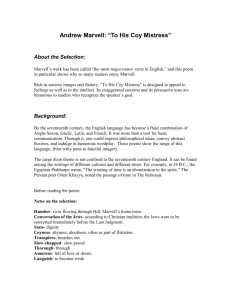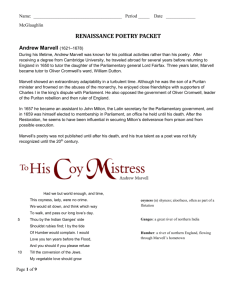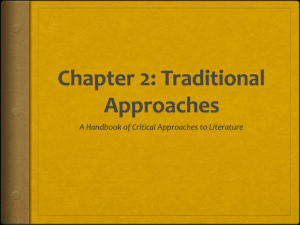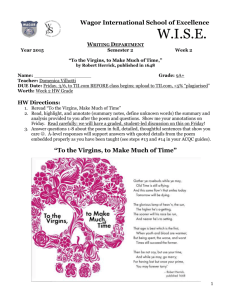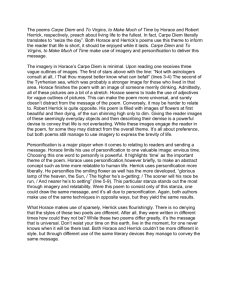To the Virgins & To His Coy Mistress Study Guide
advertisement
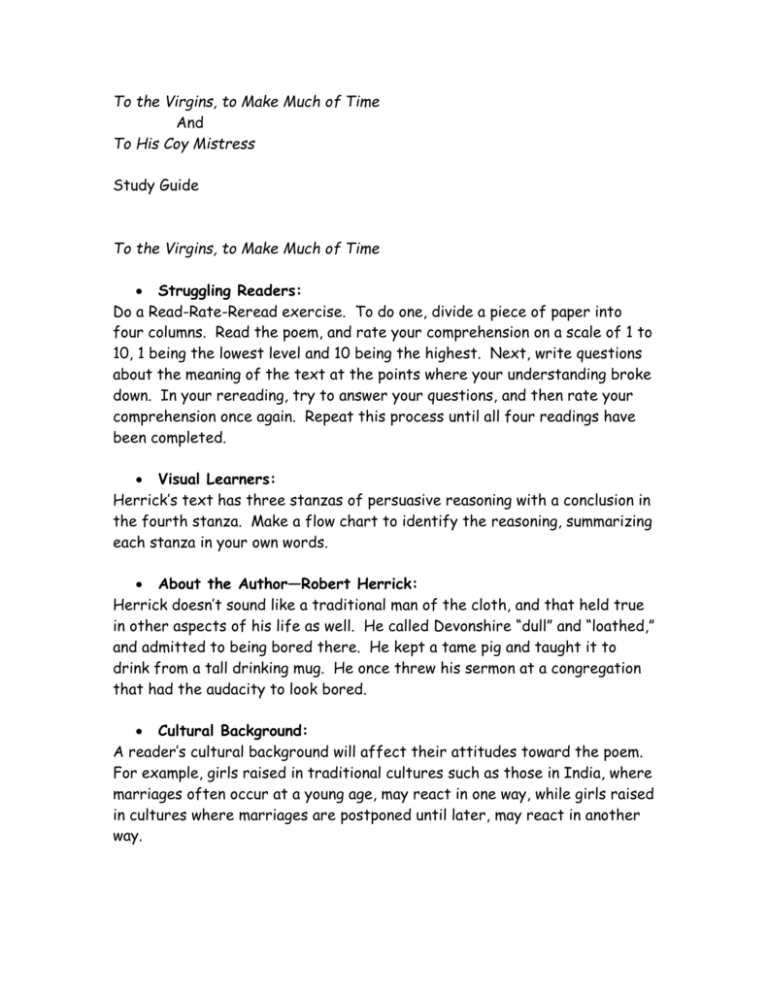
To the Virgins, to Make Much of Time And To His Coy Mistress Study Guide To the Virgins, to Make Much of Time Struggling Readers: Do a Read-Rate-Reread exercise. To do one, divide a piece of paper into four columns. Read the poem, and rate your comprehension on a scale of 1 to 10, 1 being the lowest level and 10 being the highest. Next, write questions about the meaning of the text at the points where your understanding broke down. In your rereading, try to answer your questions, and then rate your comprehension once again. Repeat this process until all four readings have been completed. Visual Learners: Herrick’s text has three stanzas of persuasive reasoning with a conclusion in the fourth stanza. Make a flow chart to identify the reasoning, summarizing each stanza in your own words. About the Author—Robert Herrick: Herrick doesn’t sound like a traditional man of the cloth, and that held true in other aspects of his life as well. He called Devonshire “dull” and “loathed,” and admitted to being bored there. He kept a tame pig and taught it to drink from a tall drinking mug. He once threw his sermon at a congregation that had the audacity to look bored. Cultural Background: A reader’s cultural background will affect their attitudes toward the poem. For example, girls raised in traditional cultures such as those in India, where marriages often occur at a young age, may react in one way, while girls raised in cultures where marriages are postponed until later, may react in another way. Elements of Literature: Carpe Diem The Latin poet Catullus originated the theme carpe diem. Although the phrase is usually translated as “seize the day,” carpo in Latin means “reap” and can refer to picking, plucking, or gathering flowers or fruit. How does this meaning fit with Herrick’s imagery? Struggling Readers: Understanding Allusion The second stanza is a classical allusion to the story of the sun god Helios. Research the Helios myth, and use it to interpret the allusion. Critical Thinking: Interpreting How does the last stanza reflect the carpe diem philosophy? Responding to the Art: Lucas van Valkenborch Lucas van Valkenborch was part of a family of landscape and genre painters. Look at the picture on page 239. Describe exactly what you see in the painting, beginning with the woman in the center. Imagine what is happening in the scene. To His Coy Mistress About the Author: Andrew Marvell In his last years, Marvell’s hatred of Charles II grew so pronounced that some people began to dread being near Marvell, for fear he would get them into trouble with the king. Because Marvell had so many political enemies, a popular rumor arose that he was poisoned—although it is more likely that he died during a fever from lack of medical care. Struggling Readers There are three divisions of the speaker’s argument: (1) If we had time enough, we could (and should) court each other for an eternity (lines 1-20); (2) but time is short and old age and death come very soon (lines 21-23); (3) therefore, let us make the most of the time we have in which to be happy (lines 33-46). Stop at the end of each section, and tell what happens in your own words. Vocabulary Note: Word Origins The word coy comes from the Latin word quietus and once meant “shy.” Coy has undergone changes over the years; it now suggests a certain deliberate flirtatiousness. Reading Skills and Strategies: Getting the Main Idea How does the speaker use the first stanza to argue that he and his mistress do not have time to waste? Elements of Literature: Personification How is time personified? What role does time play in the speaker’s argument? Elements of Literature: Carpe Diem What tells you this is a carpe diem poem? Advanced Learners Consider this poem in light of the fact that Marvell probably never married. In your opinion, what was his purpose in writing this poem? To promote the institution of marriage? To entertain? To assuage his own regrets for never marrying? To express life’s fleeting nature?
